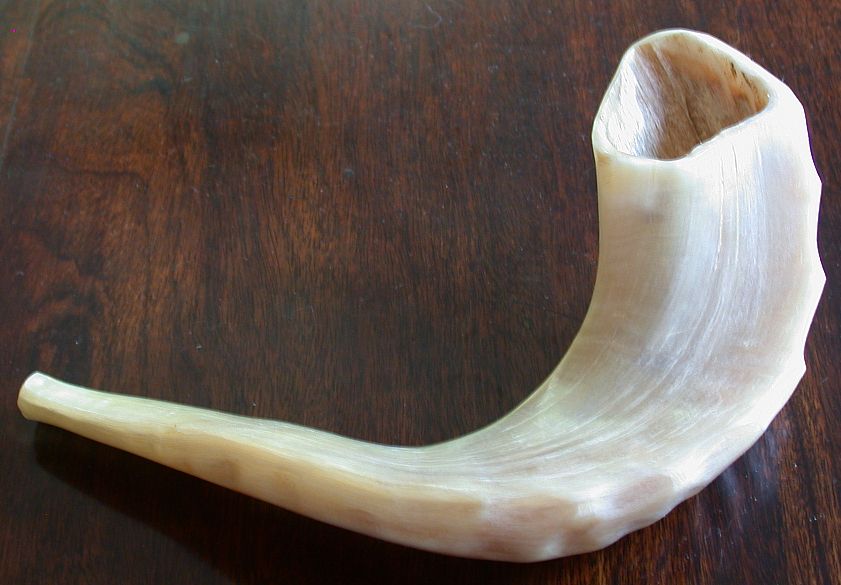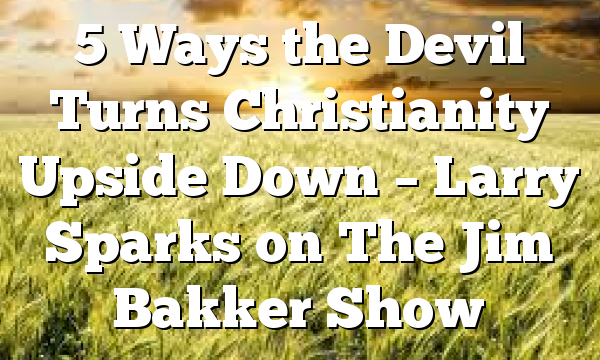Click to join the conversation with over 500,000 Pentecostal believers and scholars
Click to get our FREE MOBILE APP and stay connected
| PentecostalTheology.com



Rosh Hashanah’s primary service is the submission to the sovereignty of heaven. Therefore, on these days, even great and prestigious individuals serve G‑d in a manner which appears to be “simple”: constant recitation of Psalms, minimal sleep on both nights (to the extent possible), and particular care not to speak idle chatter . . .
—Rabbi Yosef Yitzchak Schneersohn of Lubavitch.
Rosh Hashanah literally translates as “head of the year” or “first of the year.” But it also marks the anniversary of the birth of the universe via God’s creation of Adam and Eve. In Judaism, it is a day to reflect on a person’s deeds of the past year and set the tone for the year ahead.
Jewish Holidays’ Guide for the Perplexed by Yoram Ettinger
1. Rosh Hashanah is one of four Jewish New Years: (a) Rosh Hashanah, the anniversary of the Creation, the beginning of the Jewish civil calendar (5,777) and the seasons, the setting of the Sabbatical (7th) and the Jubilee (50th) years and the figuring of the annual tithe (10%) on vegetable and grains; (b) the first day of the month of Nissan initiates the three Jewish pilgrimages/festivals (Passover, Pentecost and Tabernacles) and the measuring of the reign of kings; (c) the first day of the month of Elul, the preparations for Rosh Hashanah and the new year for animal tithes in ancient Israel; (d) the 15th day of the month of Shvat, the new year of the trees, which are role-models for human-beings.
2. Rosh Hashanah – unlike all other Jewish holidays – is a universal (stock-taking, renewal and hopeful) holiday. The Hebrew word “Rosh” (ראש) means “beginning,” “first,” “head,” “chief.” The Hebrew letters of Rosh constitute the root of the Hebrew word for Genesis, “Be’re’sheet” (בראשית), which is the first/lead word in the Bible. Just like the Creation, so should the New Year and our own actions, be a thoughtful, long-term – not a hasty – process. Rosh Hashanah is celebrated at the beginning of the Jewish month of Tishrei, which means beginning/Genesis in ancient Acadian. The Hebrew spelling of Tishrei (תשרי) is also included in the spelling of Genesis (בראשית). Rosh Hashanah is referred to as “Ha’rat Olam” (“the pregnancy of the world” in Hebrew), and its prayers highlight motherhood, optimism and the pregnancies of Sarah, Rachel and Chana, who gave birth to Isaac, Joseph, Benjamin and Samuel respectively. Noah – who led the rebirth of humanity/world – also features in Rosh Hashanah prayers.
3. The Jewish New Year (Rosh Hashanah- “the beginning of the year” in Hebrew) is compatible with the agricultural calendar. It commences with the planting of seeds and the first rain, which highlights the centrality of the soil in human life. The Hebrew word for soil/earth is Adamah ((אדמה, which stands for humility and encompasses the Hebrew word for a human-being (אדמ, pronounced Adam) – which is also the name of the first human-being – and the Hebrew letter ה, which is an abbreviation of God. The Hebrew word Adam (אדמ) encompasses the Hebrew word for blood (דמ), the liquid of life, and is the acronym of Abraham, David and Moses, three role models of humility.
4. The term Rosh Hashanah, a day of commemoration, was conceived by Jewish sages, during the Second Temple, referring to the Biblical “day of blowing the shofar (the ritual ram’s horn)” and “the day of commemorating the blowing of the shofar” (Leviticus 23:23-25, Numbers 29:1-6). Commemoration is a prerequisite for national cohesion, survival, enhanced future and refraining from past critical errors. On the other hand, forgetfulness spells ignorance, neglect of critical values and lessons, repeat of past errors and potential oblivion. The blowing of the shofar symbolizes faith in God, the annual judgment day, soul-searching and the constant drive to enhance human conduct (the Hebrew spelling of shofar, שופר, is a derivative of the verb שפר, to enhance/improve).
5. Rosh Hashanah and the shofar symbolize and commemorate:
*The reaffirmation of faith in God as the Supreme King and Judge;
*The first human-being, Adam, was created on Rosh Hashanah, the sixth day of Creation, the first day of the Jewish month of Tishrei;
*The opening of Noah’s Ark following the flood;
*The almost-sacrifice of Isaac (thou shall not sacrifice human beings!) and the Covenant of the Jewish People with God;
*The three Jewish Patriarchs, Abraham, Isaac and Jacob, and the Prophet Samuel (the latter inspired Thomas Paine, the author of “Common Sense,” the cement of the American Revolution), were conceived/born during the month of Tishrei, which is called “the month of the strong ones; ”
*The release of Joseph from Egyptian jail;
*Mount Sinai, the Ten Commandments and the Torah;
*The commitment to liberty. The blowing of the Shofar introduced the Jubilee Year, “Yovel” (יובל) in Hebrew, which is a synonym for shofar. The blowing of the shofar represents deliverance from spiritual and physical slavery. It inspired the anti-slavery Abolitionist movement in the USA;
*the reconstruction of the 2nd Temple;
*the ingathering (Aliyah) of Jews to the Jewish Homeland;
*the cycle of nature – seed planting season and the equality of day and night;
*Optimism in the face of daily adversity. Genuine repentance and rectifying one’s behavior warrants forgiveness;
*The fallibility of all human-beings, starting with Adam and including Moses;
*Humility as a critical attribute which minimizes wrong-doing;
*The “ten days of awe/repentance” which are initiated on Rosh Hashanah and sealed on Yom Kippur.
*The blowing of the Shofar constitutes a moral wakeup call.
6. The three pillars of Rosh Hashanah are repentance ,(תשובה) which – in Hebrew – means returning to good deeds, prayer (תפילה), whose root is פלל, to yearn/hope/judge, and charity ( ,(צדקהwhich – in Hebrew – means doing justice.
7. On Rosh Hashanah, one is expected to plan a spiritual and behavioral road map for the entire year. The three Hebrew words, Te’shuvah (repentance/atonement, תשובה), Sheevah (a spiritual and physical return, שיבה) and Shabbat (the Creation was completed on the Sabbath, שבת) emerge from the same Hebrew root. They constitute a triangular foundation, whose strength depends upon the depth of education and commemoration. According to King Solomon, “The triangular cord cannot be broken.”
8. The shofar is blown on Rosh Hashanah as a wake-up call, a break away from the professional, social and political mundane, in order to recommit oneself to basic values and enhancing one’s order of priorities. Blowing the shofar symbolizes a new beginning for each individual and for the Jewish people. The call for moral improvement – at Mount Sinai – was accompanied by the sound of the shofar.
9. The shofar should be humble (bent and not decorated); natural and unassuming, just like Mount Sinai, which is not the highest, or the most impressive, mountain in Sinai. Humility is the foundation of a positive character, in general, and leadership, in particular.
10. The shofar is the epitome of peace-through-strength. It is made from the horn of a ram, which is a peaceful animal equipped with strong horns to fend off predators. The numerical value of the Hebrew word for “ram,” איל, is 41 (א-1, י-10, ל-30), which is equal to the value of “mother” (אם, א-1, ם-40), who strongly protects her children.
5 Things To Eat On Rosh Hashanah 2016
Challah Bread: Fluffy rounds of challah may be the most recognizable dish at a Rosh Hashanah dinner. The braided egg bread is typically served on Shabbat, the Jewish day of rest. During Rosh Hashanah, many Jews will shape the loaves into spirals, representing continuity. Check out challah bread recipes here.
Fish Head: Since Rosh Hashanah literally means “head of the year” in Hebrew, many Jews will feast on the head of a fish. In Jewish culture, fish represents fertility and abundance.
Apples Dipped In Honey: The sweet treat symbolizes more than just the sweet new year Jews hope to be blessed with. The apple represents Gan Eden, or the Garden of Eden, which is described as the scent of an apple orchard in the Midrash and called “the holy apple orchard” in Kabbalah Judaism.
Honey Cake: Made with an array of spices like clove, cinnamon and allspice, honey cake is presented at Rosh Hashanah as a way to express Sweet New Year wishes amongst loved ones.
New Fruit: On the second night of Rosh Hashanah, Jews dine on new fruit – which is usually pomegranate – to represent the new season. While eating new fruit Jews will say the shehechiyanu blessing, which is thanks to God for keeping followers alive and ushering them into a new season.



Charlie Robin
Tom Steele The rabbi said it was 5777 years from the creation of Adam, not the creation of the worlds…
Varnel Watson
Hebrew calendar started at the time of Creation, placed at 3761 BC. The current (2017/2018) Hebrew year is 5778. According to classical Jewish sources, the Hebrew year 6000 (from sunset of 29 September 2239 until nightfall of 16 September 2240 on the Gregorian calendar) marks the latest time for the initiation of the Messianic Age.